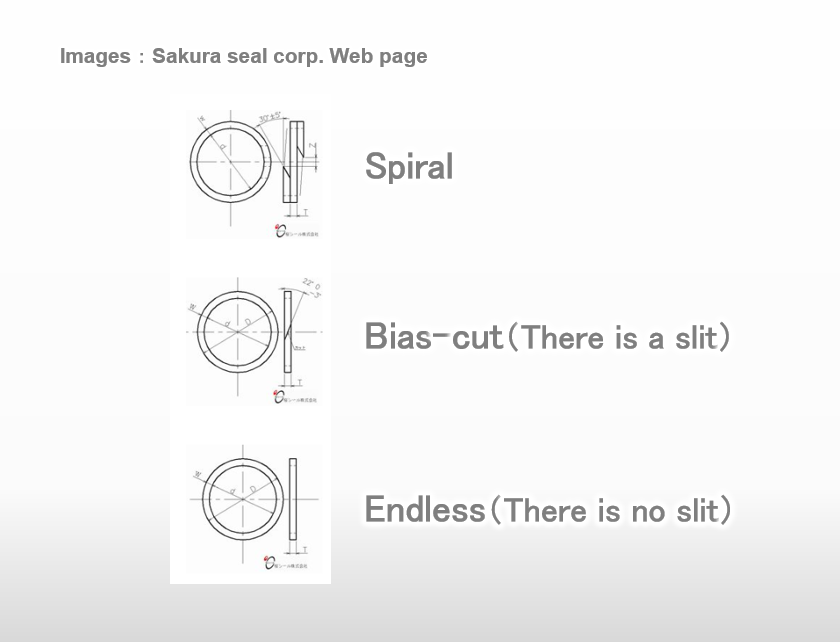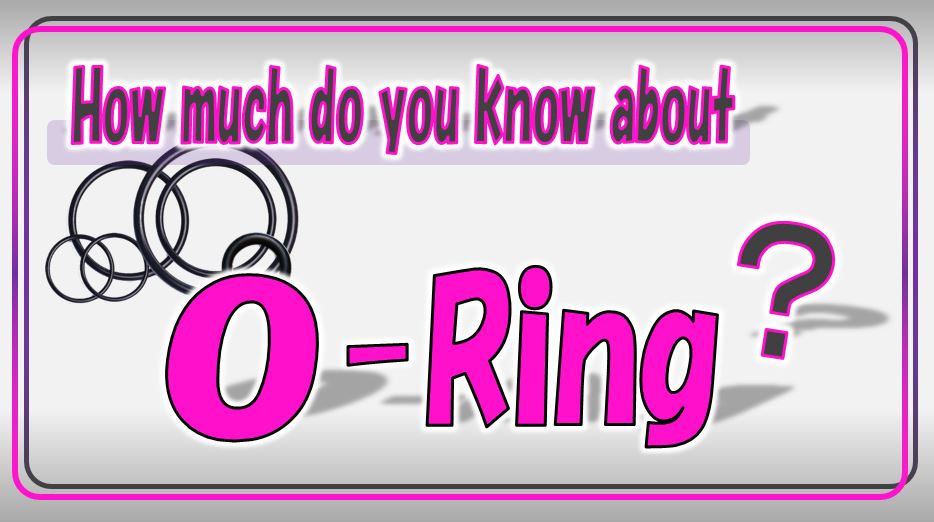Fundamental knowledge about O-rings
How much do you know about O-rings?
It’s interesting that O-rings are widely used but people don’t care about the details. How does this simple part work to stop fluid? Is it okay if we easily use O-rings since O-rings are simple parts? The theme of this article is “to learn fundamental knowledge about O-rings”.
Related YouTube video
Contents
- How do O-rings work?
- How much pressure can an O-ring take?
- The more compression value is, the better it’ll be?
- The harder an O-ring is, the better it’ll be?
- How can we specify an O-ring when we order it?
- Dimensional standard of O-rings
- Key points to prevent O-rings from getting damage
- What’s the purpose of backup rings?
How do O-rings work?
As you can guess, the reaction force of a compressed O-ring provides sealing mechanism.
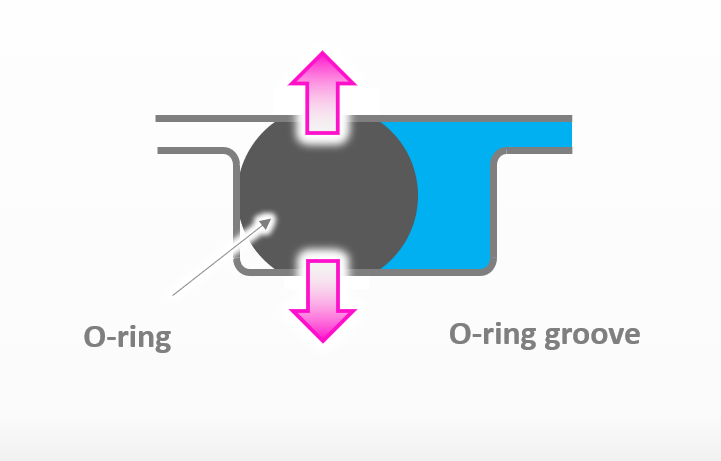
When the pressure of the fluid goes up, the fluid presses the O-ring against the groove. And then the O-ring is deformed more. That makes the reaction force stronger, and which means that the sealing has become more effective. The mechanism is called self-sealing action.
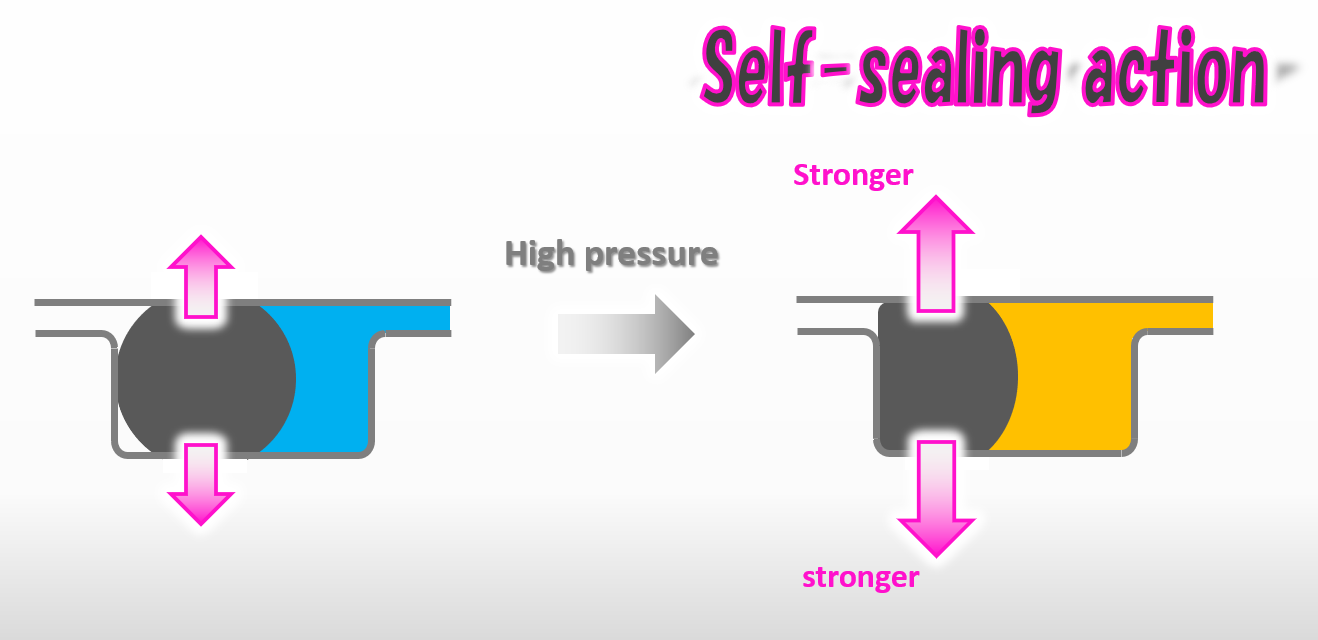
If you give more pressure to the fluid, the O-ring will be extruded and get broken. The O-ring can no longer seal the fluid.

How much pressure can an O-ring take?
The maximum pressure that an O-ring can take depends on the clearance of the groove, the hardness of the O-ring, and the strength of the O-ring.
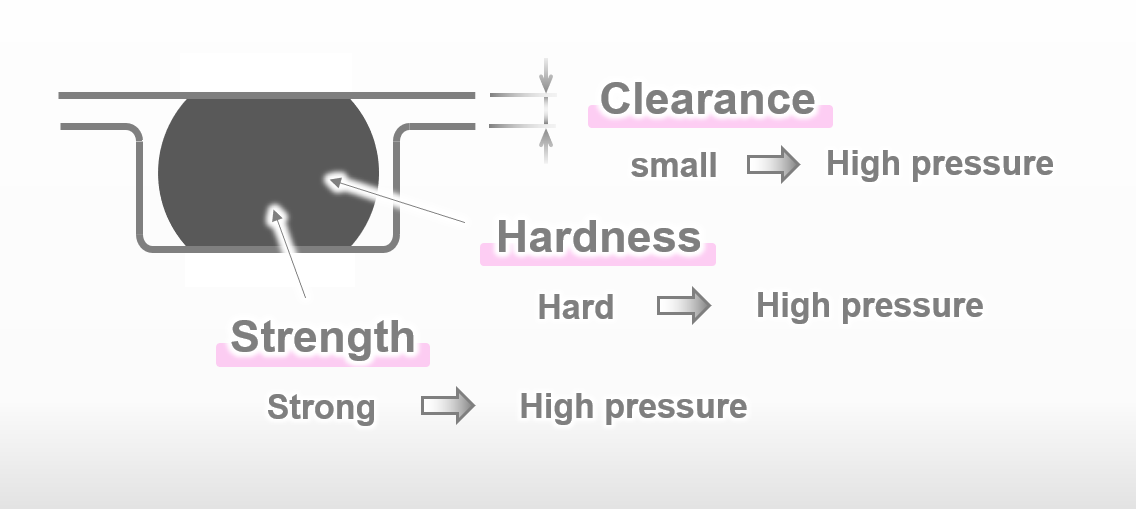
The smaller the clearance is, the higher pressure the O-ring can take. If the clearances are the same, a harder O-ring can take higher pressure. And of course, the strength of the O-ring is also an important factor to withstand high pressure.
Doesn’t compression value matter with the maximum pressure that an O-ring can take? It seems like the O-ring can take more pressure if the O-ring is compressed more.

When the pressure increase, self-sealing action works well. So, it’s not that the more you compress the O-ring, the more pressure the O-ring can take. In other words, even if compression value is small, that is the same as if compression value were large. However, compression value becomes important when the pressure is low.
You can estimate how much pressure an O-ring can take from the diagram below.
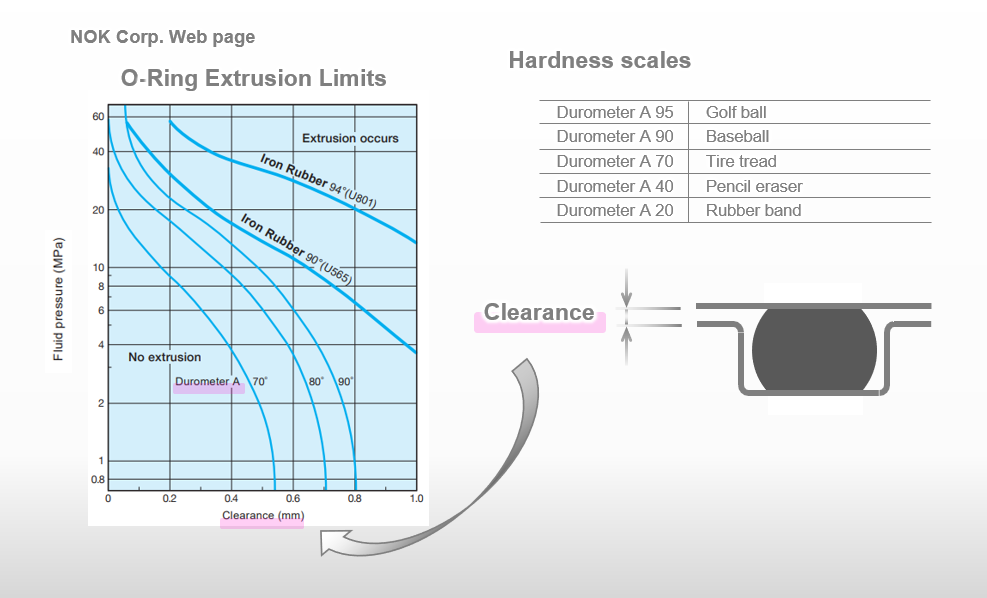
For example, if the hardness of an O-ring is 70 and the clearance is 0.2[mm], the O-ring can take up to 9[MPa]. However, you have to check whether the O-ring itself can withstand 9[MPa] or not. When you’d like to check it, the chat below may help you.
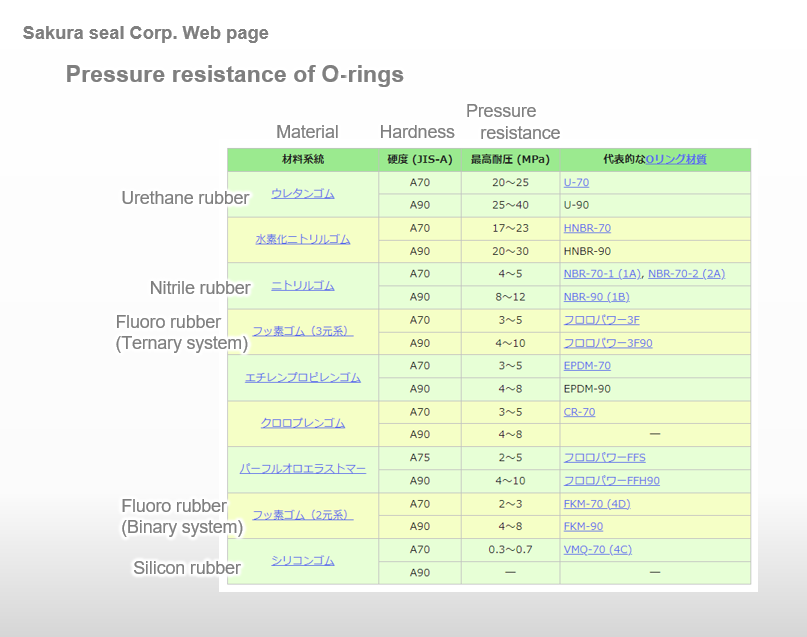
The more compression value is, the better it’ll be?
As mentioned earlier, compression value becomes important when the pressure is low. Then, should we compress an O-ring as much as possible? Actually, if you give large compression value, you need to be careful of “permanent strain”.

Permanent strain is the amount of how much the O-ring can’t return to the original shape after you release the compressed O-ring. If you are like “I’ll compress the O-ring as much as possible because the pressure is low”, the permanent strain becomes easier to remain. The O-ring may lose the sealing performance as time passes. In addition to that, if you compress an O-ring too much, the sliding resistance increases. That may give a damage to the O-ring.
Then how much should we compress an O-ring? You can check the catalog of the O-ring manufacturer. The catalog has groove dimensions for O-rings. If you follow the dimensions, you can maintain proper compression ratio, which is 10%〜30% of the thickness of an O-ring.
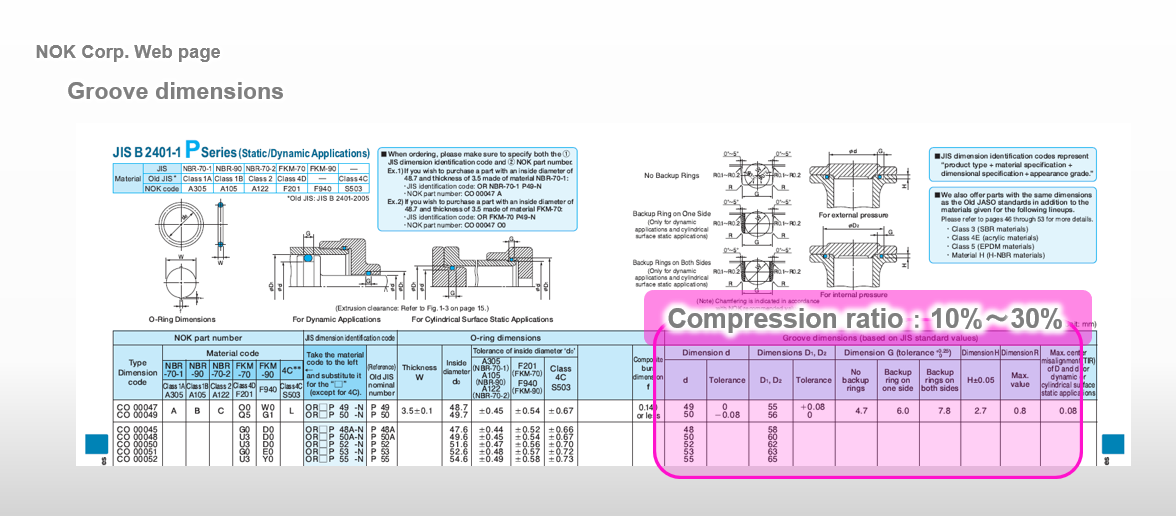
The harder an O-ring is, the better it’ll be?
Please take a look at O-ring extrusion limits diagram again. According to this diagram, the harder an O-ring is, the more pressure the O-ring can withstand.
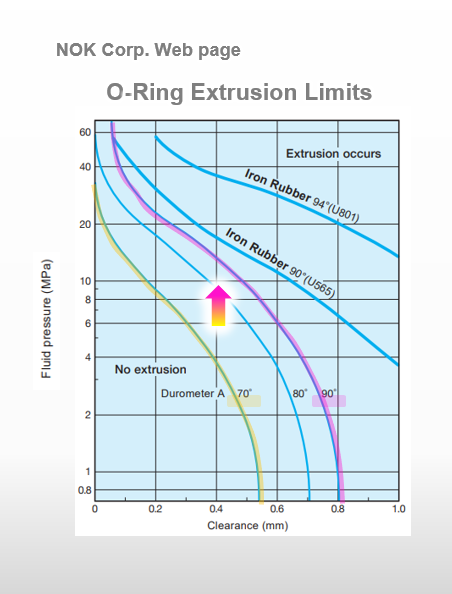
If so, should we use the hardest O-rings? Actually, we need to be careful to prevent the O-ring from getting damage, because the sliding resistance becomes larger if we use a hard O-ring.
When should we use a soft O-ring? They say that a soft O-ring is used when the structure around the O-ring is weak. A soft O-ring can maintain proper compression value even if the structure is weak. But actually, I’ve not selected soft O-rings, and I’ve not seen a soft O-ring used, either.
How can we specify an O-ring when we order it?
It depends on a manufacturer as you can guess but we can specify an O-ring as below.
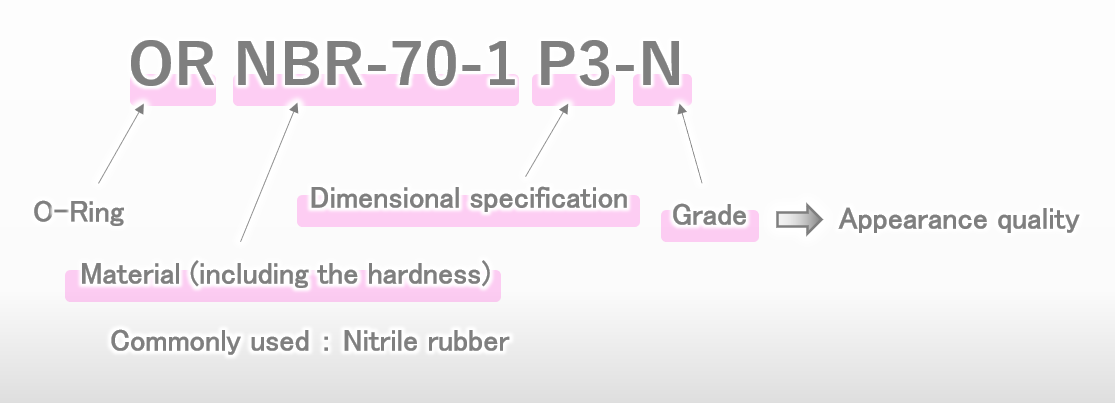
Firstly, you need to specify which material you’d like to use. If you look at a catalog, you can check the characteristics and the hardness of each material. Nitrile rubber is commonly used but you need to select proper material depending on which fluid you are going to use. Let me tell you about dimensional specification later. Secondly, grade is about the appearance quality of the O-ring. But actually, I haven’t care about it and I have never been asked which grade I need when I order O-rings.
Dimensional standard of O-rings
Literally, dimensional standard of O-rings is about sizes of O-rings. I’m going to explain it based on the O-ring standard in Japan but the theories don’t matter with where you are. P series and G series are commonly used. S series is rarely used. V series is for vacuum.
If you order P50, you’ll get a P series O-ring with diameter of 50[mm].
What is the difference between P series and G series? In Japan, the seals used for dynamic applications are called “packing”. While the seals used for static applications are called “gasket”. P series means packing. They are used for dynamic applications. G series means gasket. They are used for static applications. So, what is the actual difference between P series and G series? The thickness of O-rings in P series is different from the thickness of O-rings in G series. A thin O-ring may be twisted if it is used for dynamic applications. You should use thick O-rings for dynamic applications. In other words, the O-rings in P series are thicker than the O-rings in G series.
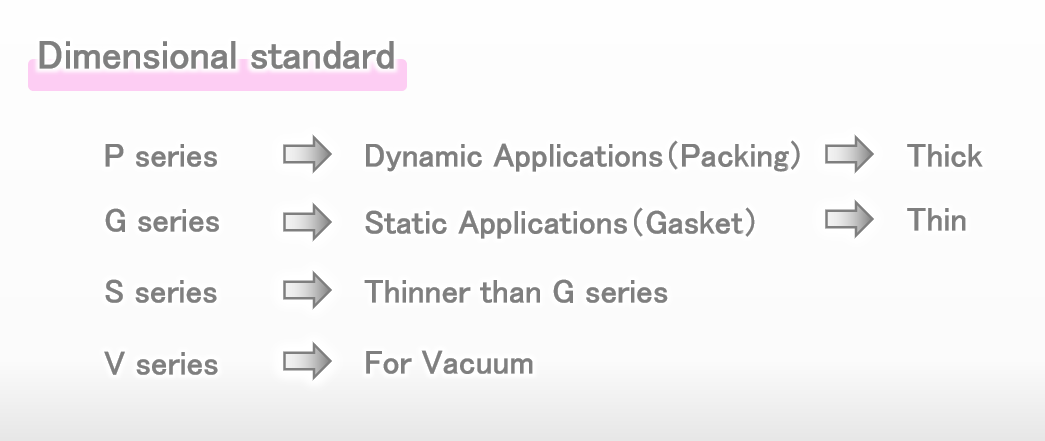
It’s no problem if you use P series for static applications. Or rather it’s better if you use P series for static applications because that makes permanent strain difficult to remain. If you have space for a groove, if you are not on a tight budget, you should use P series for static applications. By the way, the thickness in S series is less than the thickness in G series. If you can’t have space for a groove, S series can be one of your options. You have other options other than O-rings. D-rings and X-rings are resistant to torsion. They may be one of your options if you are in a trouble of O-ring torsion.
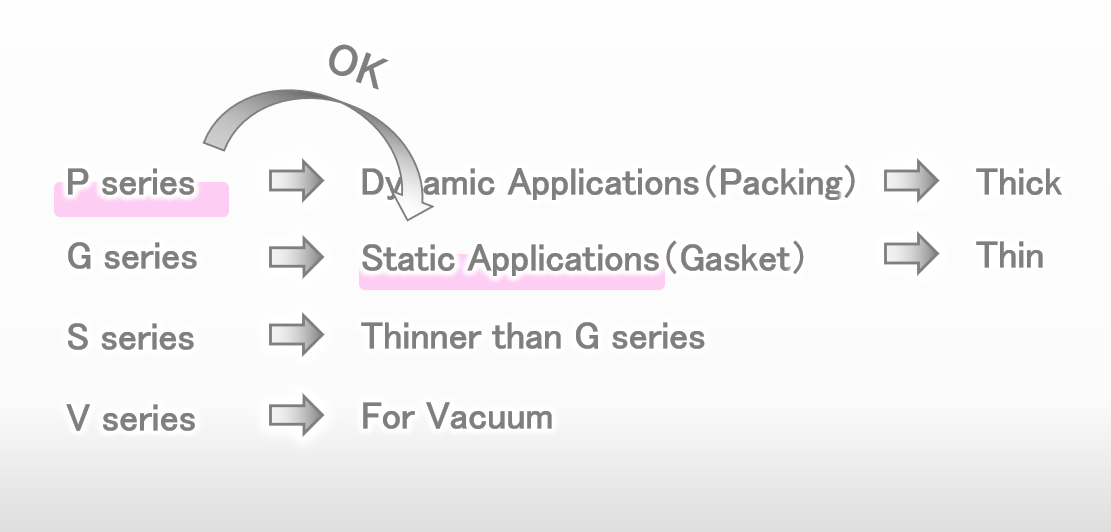
Key points to prevent O-rings from getting damage
In order not to give damage to an O-ring, firstly, you need to be careful of surface roughness. It’s obvious that surface roughness is important when O-rings are used in dynamic applications. However, even when O-rings are used in static applications, you should be careful of surface roughness. Even if an O-ring is used in static application, the O-ring moves and rubs against the groove when the pressure changes. That’s why surface roughness is always important. You can check a catalog if you’d like to know what good surface roughness for your O-ring is. The smaller surface roughness is, the better it’ll be. However, you should avoid mirror finish because the sliding resistance becomes larger.
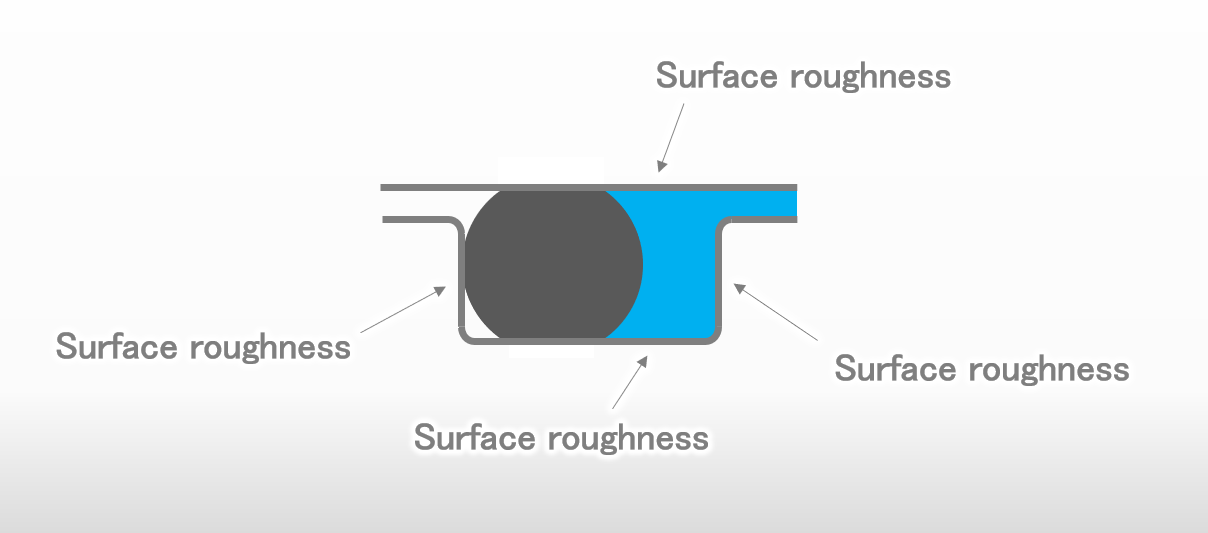
Secondly, you need to be careful of the shape of corners. If the shape is sharp, it will give damage to an O-ring when the pressure becomes high. The shape has to be round only a little bit. If you check a catalog, you can know what a good dimension of each R is. You have to design grooves based on the dimensions on a catalog.
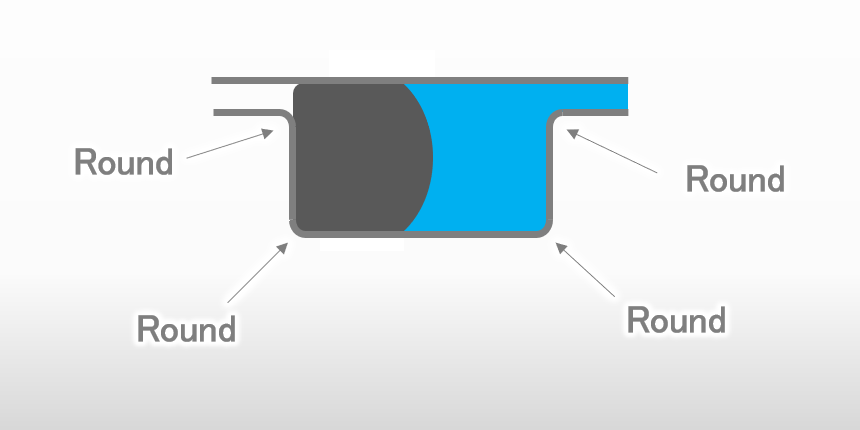
Also, you need to be careful of the shape of holes and shafts in order not to give damage to O-rings when you insert the O-rings. You have to design holes and shafts based on a catalog.
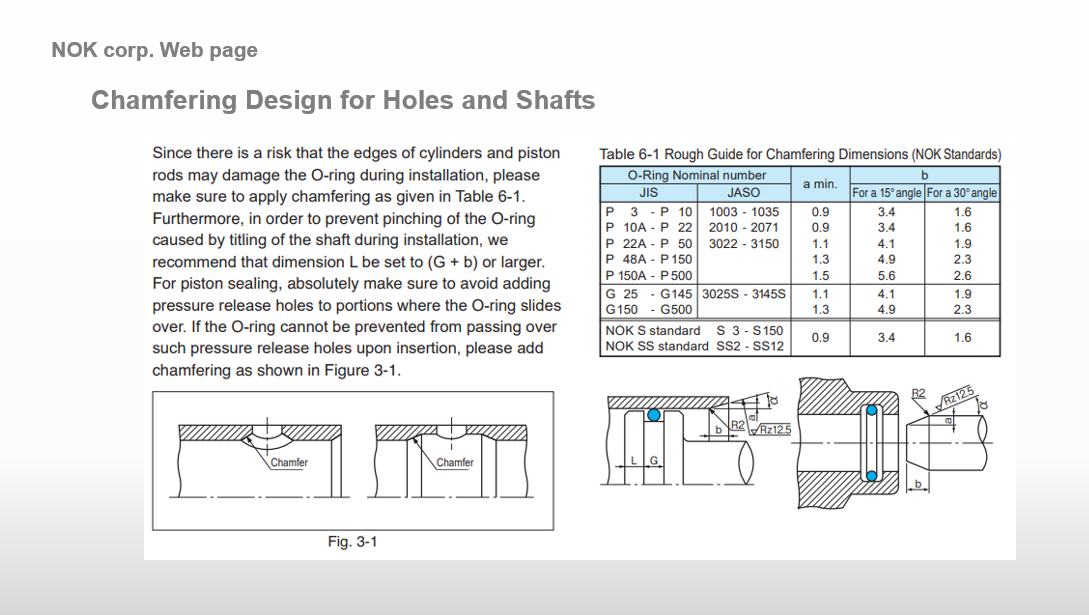
What’s the purpose of backup rings?
What’s the purpose of backup rings? A backup ring will help you if you’d like to prevent your O-ring from extruding.
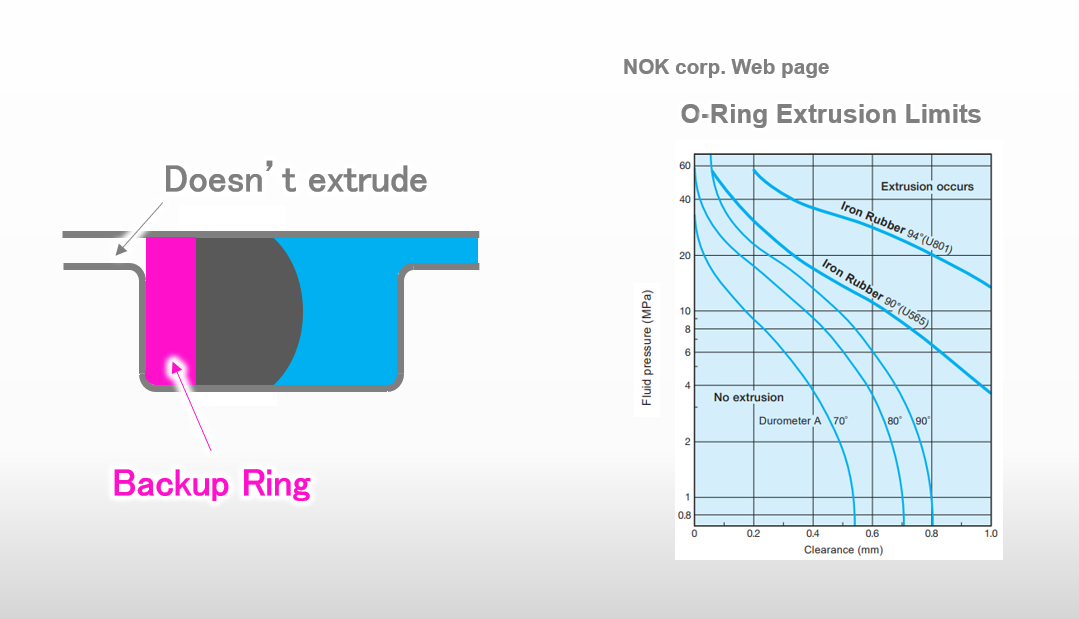
There are 3 kinds of backup rings. The most effective one is an endless type because it doesn’t have a slit. However, since it doesn’t have a slit, you may have hard time to insert it. You need to extend an endless backup ring before you insert it to a groove. Even if you successfully insert it, you need to wait for the endless backup ring to shrink. If you don’t wait for it, the endless backup ring may get damage when you insert it to a hole. Some people purchase an extra endless backup ring because they might mistakenly break an endless backup ring.
